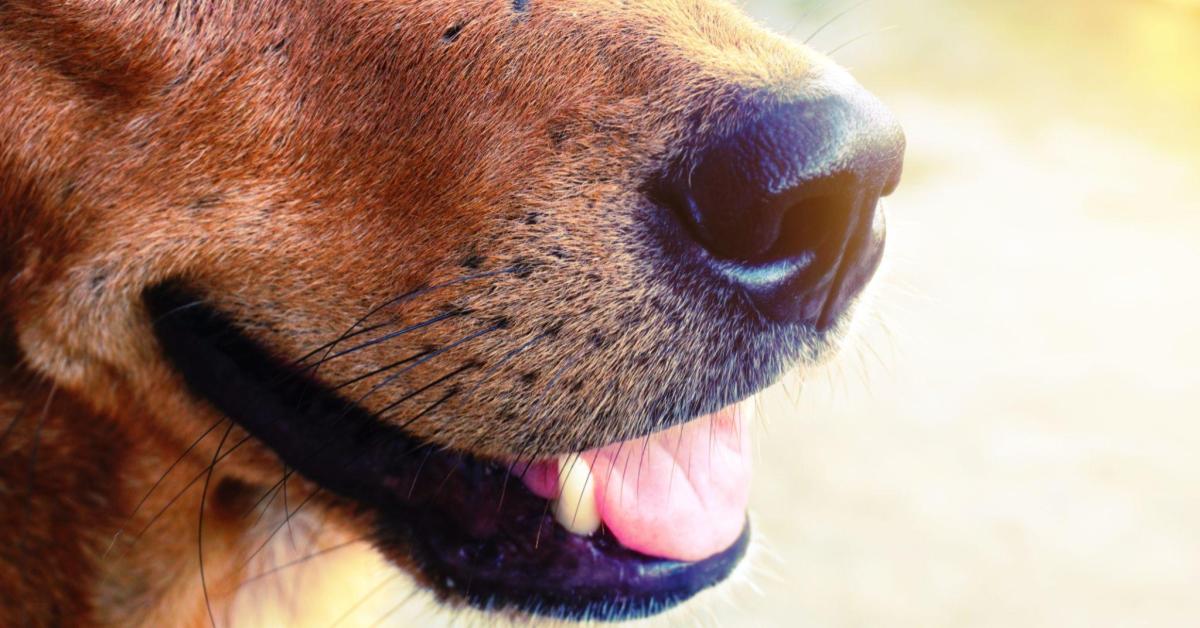Ever wondered, “Why do dogs have whiskers?” While they’re certainly a cute feature on your dog’s face, whiskers are so much more. In fact, they’re one of the most vital sensory tools our dogs have.
Let’s delve into everything you need to know about these tactile hairs.
What are dog whiskers used for?
Scientifically known as vibrissae, dog whiskers play a crucial role in our dogs’ sensory perception, communication, and spatial awareness. Just like cat whiskers, these specialized hairs are deeply connected to nerve endings and blood vessels, serving as a powerful sensory organ. They help your dog navigate the world around them, providing essential information about their environment.
As your dog explores, their whiskers can detect air currents, nearby objects, and navigate tight spaces or low-light environments. This sensory information is sent to your dog’s brain, helping them navigate the world around them. Think of their whiskers like a built-in radar system that helps your pooch navigate and avoid obstacles.
Why do some dogs have longer whiskers than others?
Different dogs have different length whiskers, but the function remains the same. From long-haired breeds to the hairless breeds, these coarse hairs play an important role in their lives. Their length and thickness may vary for a few reasons:
Dog’s breed
Different dog breeds exhibit variations in coat types, including the length and thickness of whiskers. Breeds with long facial hair or wiry coats may have longer whiskers, while short-haired breeds may have shorter ones.
Genetic variations
Just like humans have diverse physical features, dogs also have genetic variations that influence the length and thickness of their whiskers. It’s a result of the genetic traits inherited from their parents.
Evolutionary adaptations
Throughout the evolutionary process, dogs have adapted to various environments and roles. Whisker length could be an adaptation that enhances a dog’s ability to navigate, hunt, or communicate based on the specific challenges they face in their natural or domesticated environments.
What is canine whisker fatigue?
The idea behind canine whisker fatigue, also known as “whisker stress” or “whisker fatigue,” is that when a dog’s whiskers come into constant contact with objects or surfaces, it may lead to sensory overload or irritation. This is believed to cause discomfort and stress for the dog.
Signs that are sometimes associated with whisker fatigue include behaviors such as reluctance to eat from deep bowls, pawing at the food, or displaying signs of stress during mealtimes. Some proponents of this concept suggest using shallow bowls to avoid constant stimulation of the dog’s whiskers.
It’s important to note that while whisker fatigue is a topic discussed among some dog owners and in certain literature, it may not be universally accepted within the veterinary community If you have concerns about your dog’s behavior or well-being, always consult your veterinarian.
Dog whisker FAQs
Do dogs’ whiskers grow back if trimmed?
While they do grow back, it’s best to avoid trimming whiskers. If this happens on accident at the groomer’s or while your dog is playing at the dog park, don’t panic – they’ll grow back in due time.
Can dogs feel pain if their whiskers are touched?
Yes, it’s possible that your dog feels discomfort or stress when you touch their whiskers. Some dogs may have a higher tolerance than others, but it’s still best to avoid fiddling with these sensitive hairs.
Why do dog’s whiskers twitch?
Dogs’ whiskers twitching is a sign that their sensory exploration and communication is at play! It’s perfectly normal and not cause for concern.
As you can see, your dog’s whiskers are not just there for looks – they play a vital role in your pooch’s daily life. Many dog owners wonder why dogs have whiskers, so you’re not alone. By educating yourself on whiskers’ important functions, you can pick up on how they’re feeling and help keep them comfortable.




